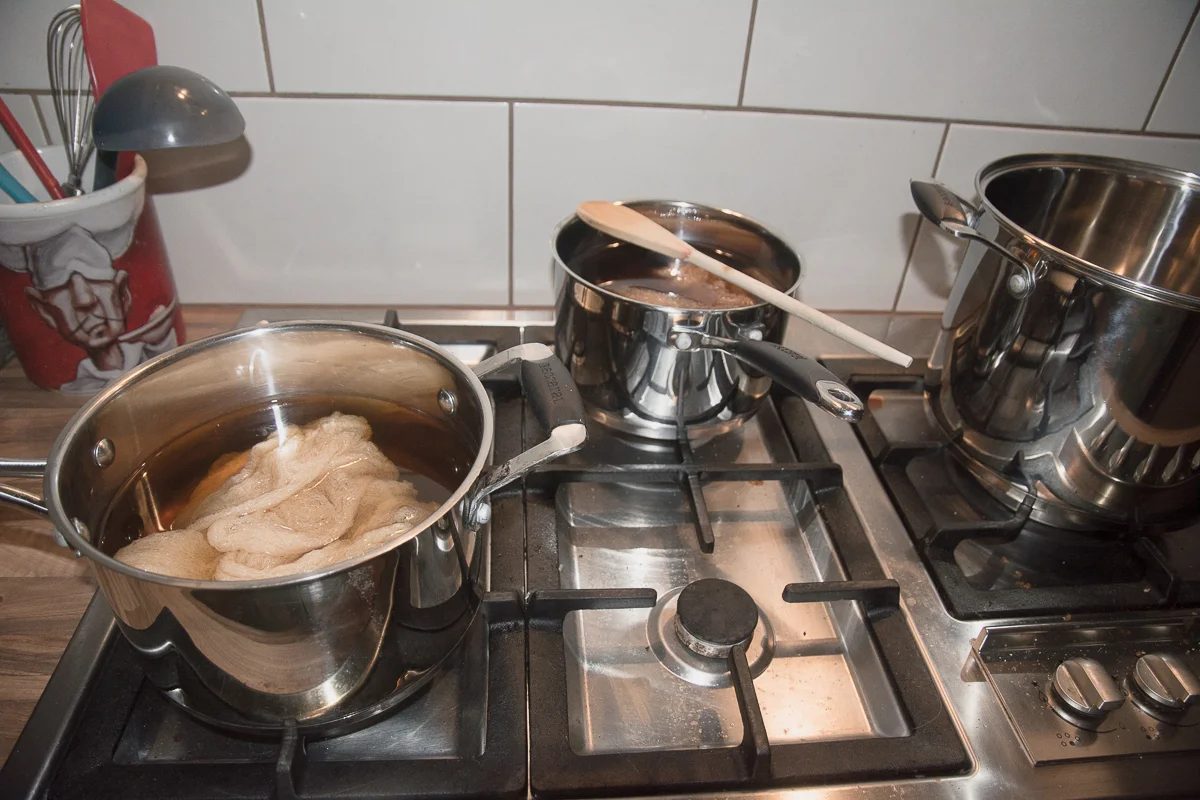Dyeing Cheese Cloth using natural dyes
A little while back I was feeling a little industrious by hand dyeing cheesecloth, I have usually been a little lax in the fabric department, I don’t knit or sew or makes curtains or clothes, I certainly do not attempt dyeing fabric, with commercial dyes at any rate. But as Google is my friend I did a bit of research on using natural dyes. I seem to have no problem staining my clothes, so surely I could purposefully stain some cheesecloth?
Requirements:
Pot. Use one as big you need and can successfully carry. If using commercial dyes, try to find a pot that you can use exclusively for your dyeing crafts…that is if you ever attempt it again. As I was only using household materials, I used my normal cooking pots.
Cloth. I used plain old Cheesecloth, this was washed and dried before before proceeding
Dye medium. Here I’m using Coffee, Green Tea and Pomegranate (grenadine syrup). There are so many interesting possibilities for colours, from plants, juice, spices and teas.
blueberries – light purple
blackberries – dark plum
Beetroot – light pink to red
saffron – golden yellow
turmeric – bright yellow
Strawberries – rose pink to salmon
Pomegranate juice – purple (Blush pink)
Coffee – light brown
Green/Black Tea – ecru
4.Preparing the Fabric – Mordant. Before you start, you need to treat the fabric to be dyed. The term mordant (French “to bite”) making it so that the colour will hold on and not wash straight out again. There are different types and methods for mordants, some are toxic (chemical dyes) – so here are 2 that you can use safely at home (and not worry about pour down the drains):
1. Vinegar – use for plants (1 part vinegar to 4 parts cold water)
2. Salt – use for berries (1/2 cup of salt to every 8 cups of cold water)
Process
Fill your pot with water and add your mordant, bring to a boil, add fabric and simmer your fabrics for 1 hour.
Turn off heat and let the fabric sit in the pot until the water cools. Remove and rinse under clean water – and then you’re ready to dye!
If using plants you will need to extract the colour from the plant material. Chop it up, crush it, pour or sprinkle it into your pot of water (double the amount of water to dye medium) Boil for 15 minutes to 1 hour – depending on the dye medium (some release their colour quicker than others, if it’s juice it’s just a matter of heating it up). Turn off the heat and leave to cool a little before adding the fabric. If you have bits of plant material, scoop them out.
Now, place your damp fabrics in the pot of what is now, your dye colour. Simmer together until the fabric reaches the desired colour (even overnight if you want a deep rich colour, just let it soak!) The colour of the fabric will be lighter when its dries.
You can repeat the dyeing process two or three times to intensify the colour and improve its resistance to fading.
Muslin, silk, cotton and wool work best for natural dyes. Also note that all dyed fabric should be laundered in cold water and washed separately.
Check the colour of your cloth and if it’s dark enough, remove the fibres from dye bath, rinse with cold water until water runs clear
Hang to dry. Once fabric has dried, hand wash gently with a mild detergent



















